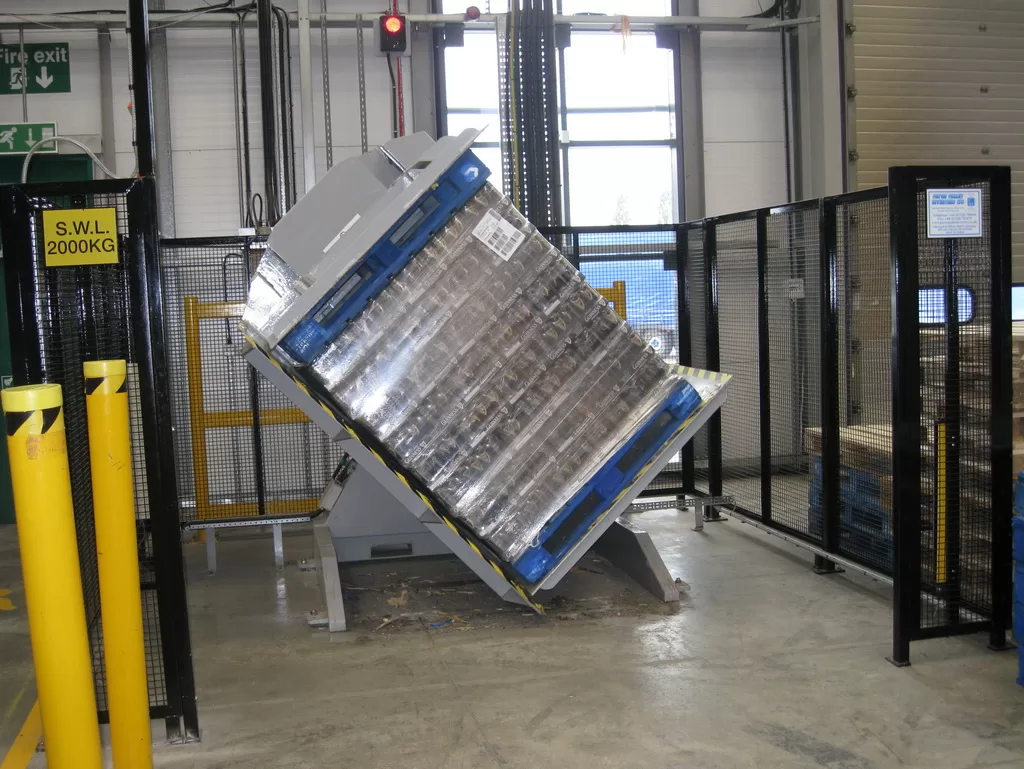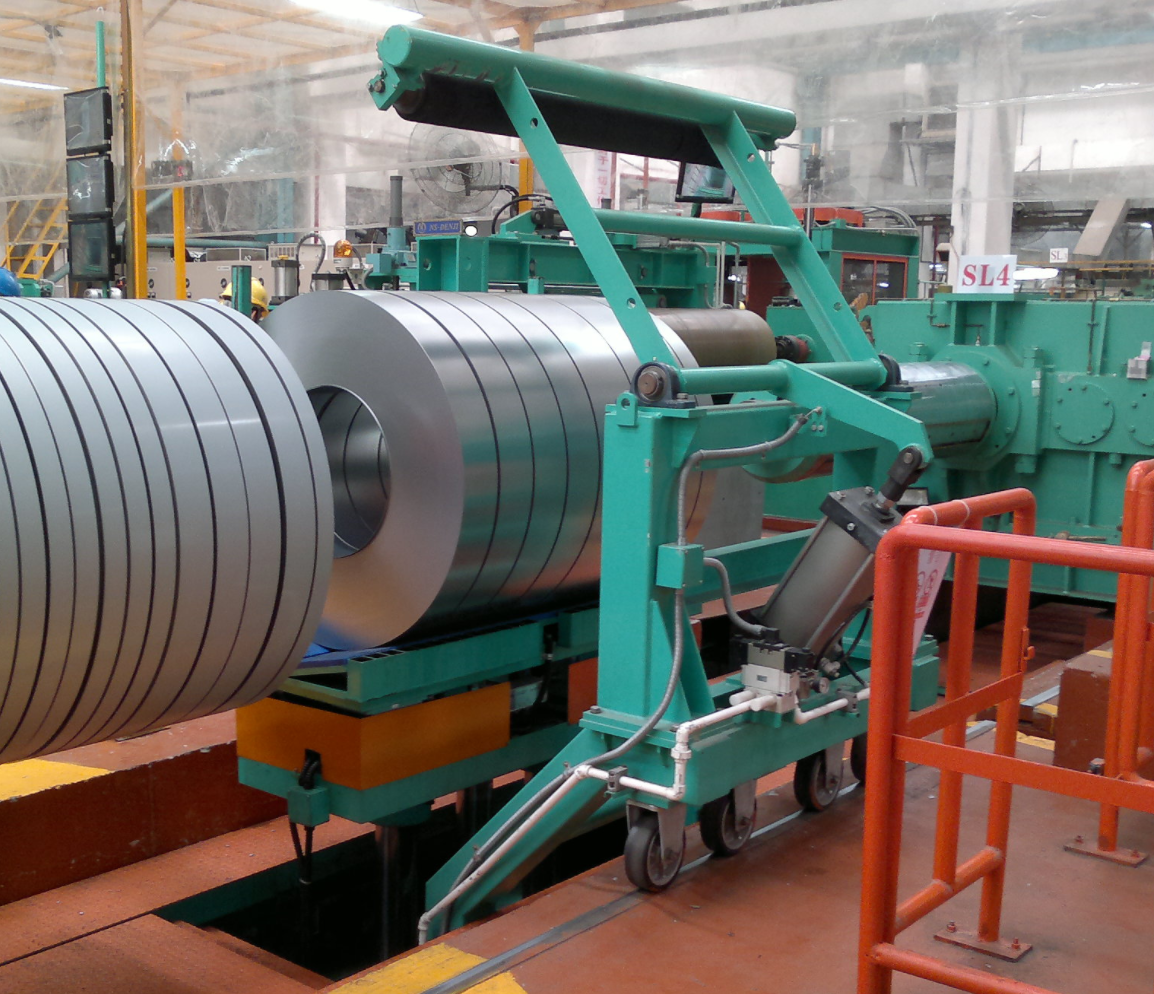Investing in automation is crucial for modern manufacturing, especially in sectors dealing with heavy and demanding materials like steel coils. Automated solutions for steel coil packing are revolutionizing how these products are handled, ensuring efficiency, safety, and consistency in output. These systems not only boost productivity but also offer a significant return on investment for businesses looking to optimize their packaging processes.
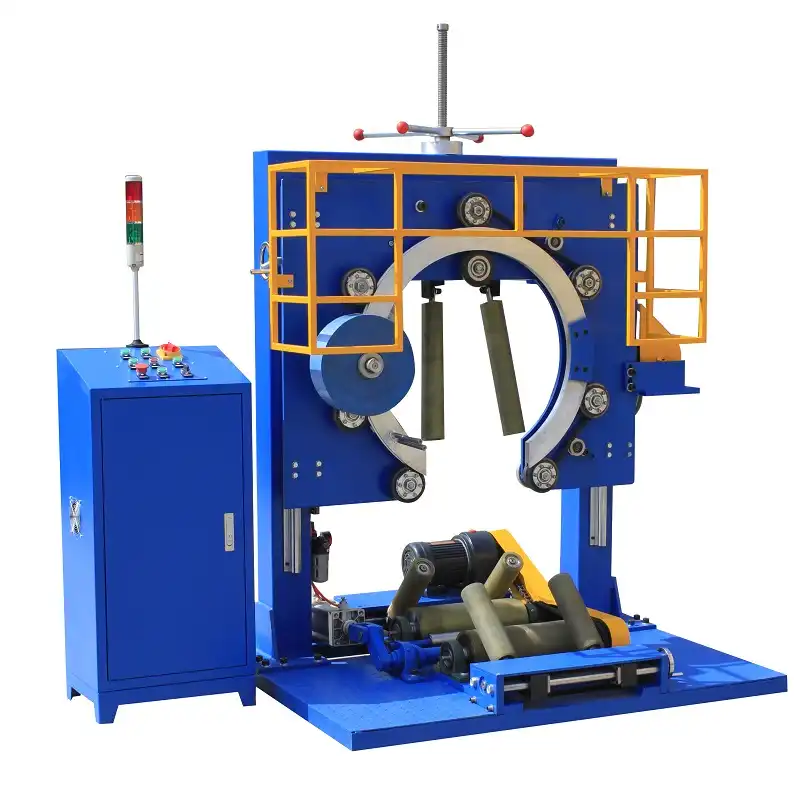
Automated solutions for steel coil packing encompass a range of technologies designed to streamline and enhance the packaging process. These solutions typically include robotic systems for handling heavy coils, automated wrapping and strapping machines to secure and protect the steel, and integrated conveyor systems to move coils efficiently through the packaging line. The primary goal is to minimize manual labor, improve packing speed, ensure consistent quality, and enhance workplace safety.
The journey towards optimizing steel coil packing involves a careful consideration of various automated technologies and their integration into existing production lines. To fully appreciate the transformative impact of automation in this domain, let’s delve into the specific benefits and explore the different types of automated solutions available for steel coil packing.
Benefits of Automated Steel Coil Packing Systems
Automating steel coil packing offers a plethora of advantages that extend beyond mere efficiency gains. For manufacturers and packaging companies, the implementation of automated systems translates to tangible improvements in productivity, cost savings, and workplace safety. These benefits collectively contribute to a more robust and competitive operational framework.
Automated steel coil packing systems deliver significant benefits, primarily by increasing production rates and reducing operational costs. These systems minimize the need for manual labor, which in turn reduces labor costs and the risk of repetitive strain injuries. Furthermore, automation ensures consistent and high-quality packaging, minimizing product damage during transit and storage. The result is improved efficiency, enhanced safety, and a quicker return on investment due to streamlined operations and reduced waste.
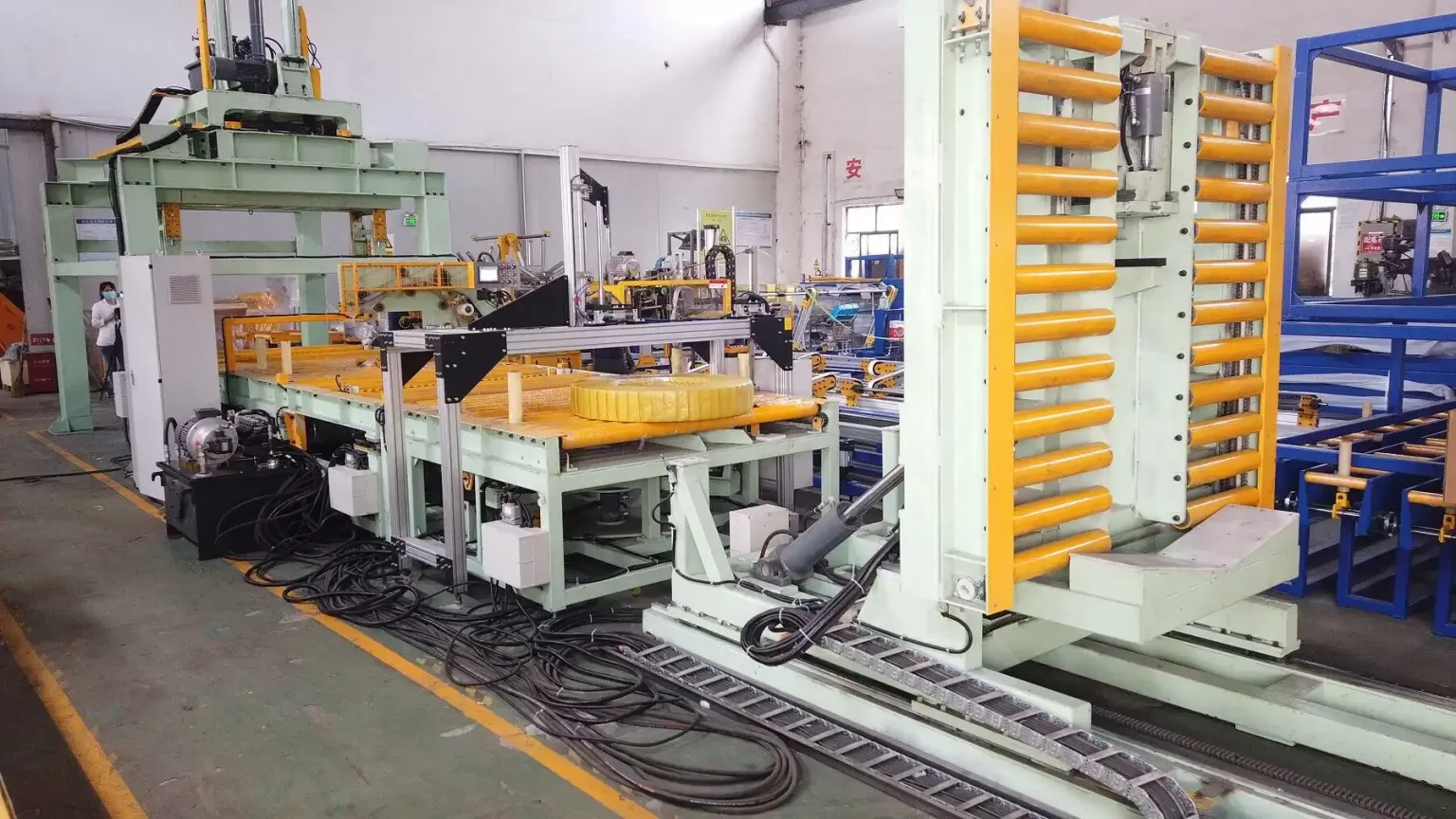
To truly understand the impact of automated steel coil packing, it’s essential to examine not just the broad advantages, but also to critically assess the return on investment (ROI) and the specific areas where automation brings the most value. Let’s delve deeper into whether these systems are genuinely worth the investment and how they reshape the economics of steel coil packaging.
Are Automated Steel Coil Packing Systems Worth the Investment? A Deep Dive into ROI
The decision to invest in automated steel coil packing systems is often weighed against the perceived high upfront costs. However, a comprehensive analysis reveals that the long-term benefits and cost savings often outweigh the initial investment, leading to a substantial return on investment. Let’s break down the key factors that contribute to this ROI and compare automated systems against traditional manual packing methods.
| Feature | Manual Packing | Automated Packing Systems |
|---|---|---|
| Speed & Throughput | Lower, dependent on labor speed | Higher, consistent, and faster |
| Labor Costs | High, significant manpower | Lower, reduced manpower needs |
| Error Rate | Higher, prone to human error | Lower, precise and consistent |
| Safety | Lower, higher risk of injuries | Higher, reduced risk of injuries |
| Consistency | Variable, dependent on skill | Consistent, standardized quality |
| Material Waste | Higher, potential for damage | Lower, minimized damage |
| Long-term Cost | Higher operational costs | Lower operational costs |
| Return on Investment | Slower, less predictable | Faster, more predictable |
As demonstrated in the table, automated packing systems offer clear advantages across multiple operational aspects. While the initial investment in automated machinery is considerable, the long-term savings in labor costs, reduced material waste, and increased throughput contribute to a faster and more predictable ROI, often within a year for many companies. Furthermore, the enhanced safety and consistency provided by automation are invaluable, reducing risks and improving product quality, which indirectly boosts profitability and customer satisfaction. For businesses aiming for scalability and long-term efficiency, automation solutions for steel coil packing are not just a worthwhile investment but a strategic imperative.
Types of Automated Solutions for Steel Coil Packing
The realm of automated steel coil packing is diverse, offering a range of solutions tailored to different production needs and coil specifications. From wrapping and strapping to stacking and coiling, each type of automated system addresses specific stages in the packaging process, contributing to an overall streamlined operation. Understanding these different types is crucial for selecting the most appropriate solution for a given manufacturing environment.
Several automated solutions are available for steel coil packing, including coil wrapping machines that protect coils from environmental damage, strapping machines that secure coils for safe handling and transport, stacking systems that automate the palletizing of packed coils, and coiling machines that prepare coils for packaging. These systems can be integrated or used independently to automate various aspects of the steel coil packing process, enhancing efficiency and reducing manual intervention.
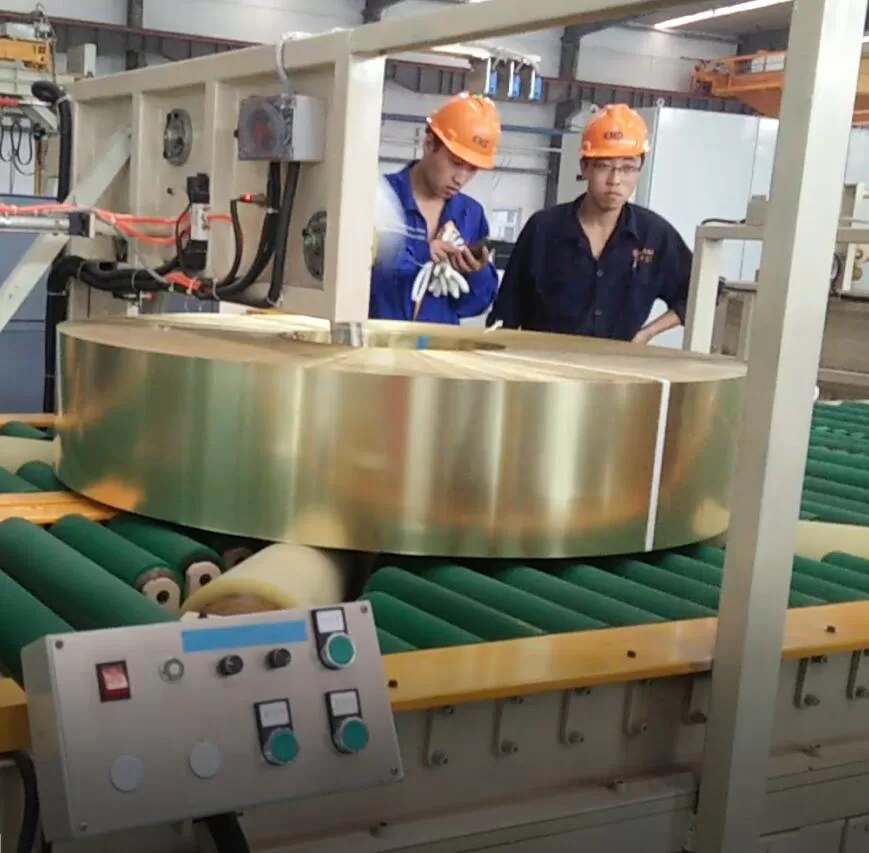
To gain a deeper understanding of these automated solutions, it’s beneficial to explore the technical landscape of each type. By examining the machinery and technologies involved in wrapping, strapping, stacking, and coiling, we can better appreciate how these systems contribute to a fully automated steel coil packing line.
Exploring the Technical Landscape: A Closer Look at Different Automation Technologies
Automated steel coil packing leverages a variety of technologies, each designed to perform specific tasks with precision and efficiency. Let’s delve into the technical details of the primary types of automated solutions:
-
Coil Wrapping Machines: These machines are designed to apply protective wrapping materials, such as stretch film, VCI paper, or woven fabric, around steel coils.
- Orbital Wrappers: These are commonly used for steel coils and employ a rotating ring that moves around the stationary coil to apply wrapping material. They are ideal for eye-through wrapping, ensuring complete coverage and protection against dust, moisture, and rust.
- Horizontal Wrappers: These machines are suitable for horizontally positioned coils, wrapping them along their length. They are often integrated into production lines for continuous operation.
- Vertical Wrappers: Designed for vertically positioned coils, these wrappers are advantageous when space is limited and for certain types of coil handling systems.
-
Coil Strapping Machines: Strapping machines secure steel coils using materials like steel straps or PET straps, ensuring stability during handling and transportation.
- Automatic Strapping Machines: These machines automatically apply, tension, and seal straps around the coil, significantly speeding up the strapping process compared to manual methods.
- Steel Strap Machines: Used for heavy-duty applications, these machines apply robust steel straps that can withstand significant tension and secure very heavy coils.
- PET Strap Machines: PET straps offer a lighter, more flexible alternative to steel straps while still providing substantial strength. Automated PET strapping machines are increasingly popular for their efficiency and cost-effectiveness.
-
Coil Stacking Systems: These systems automate the process of stacking packed steel coils onto pallets or in designated storage areas.
- Robotic Palletizers: Robots equipped with specialized grippers are used to pick up and place packed coils onto pallets in a pre-programmed pattern. This ensures consistent and stable stacking, maximizing pallet utilization and safety.
- Automatic Stackers: These systems use mechanical arms and conveyors to lift and stack coils, often integrated with wrapping and strapping lines for a seamless end-of-line solution.
-
Coiling Machines: While primarily used in the steel production process, automated coiling machines also play a role in preparing coils for packaging.
- Automatic Coilers: These machines wind steel strips or wires into coils of predetermined dimensions and weight, ready for subsequent packaging processes. Modern coilers often include features like automatic cutting and tension control to ensure uniform and tightly wound coils.
- Integrated Coiling and Packing Lines: Advanced systems integrate coiling directly with wrapping and strapping, creating a fully automated line from raw material to packed coil.
By integrating these diverse automated solutions, manufacturers can create comprehensive steel coil packing lines that minimize manual labor, maximize throughput, and ensure consistently high-quality packaging. The choice of specific technologies depends on factors such as coil size, production volume, and specific packaging requirements.
Key Components of an Automated Steel Coil Packing Line
A fully automated steel coil packing line is a complex system comprising various interconnected components, each playing a crucial role in the overall process. From conveying and sensing to robotic handling and control systems, these components work in concert to ensure efficient and reliable packaging. Understanding these key elements is essential for appreciating the sophistication of automated steel coil packing.
An automated steel coil packing line typically includes several key components working in unison. These include conveyor systems to move coils, sensors to detect coil position and dimensions, robotic arms for handling and positioning heavy coils, wrapping machines to apply protective layers, strapping machines to secure the package, palletizing systems for stacking, and a central control system to orchestrate the entire process. These components together create a seamless and efficient packaging workflow.

To fully grasp the functionality of an automated steel coil packing line, it’s beneficial to break down the essential components and examine their individual roles and contributions to the overall system. Let’s explore the building blocks that make up these sophisticated automation setups.
Essential Components Breakdown: Understanding the Building Blocks of Automation
The effectiveness of an automated steel coil packing line hinges on the seamless integration and efficient operation of its constituent components. Here’s a breakdown of the key elements and their functions:
| Component | Function | Benefits |
|---|---|---|
| Conveyor Systems | Transport steel coils between different stations in the packing line. | Ensures smooth and continuous flow of coils, reducing bottlenecks and manual handling. |
| Sensors | Detect coil position, dimensions, and weight at various stages. | Provides real-time data for precise machine operation and quality control, ensuring accurate packaging. |
| Robotic Arms | Handle and manipulate heavy steel coils for lifting, positioning, and stacking. | Replaces manual labor in heavy lifting tasks, improving safety and efficiency, and enabling precise movements. |
| Wrapping Machines | Apply protective wrapping materials (stretch film, paper, etc.) around coils. | Protects coils from environmental damage, dust, and moisture, enhancing product preservation and appearance. |
| Strapping Machines | Securely strap packed coils with steel or PET straps for transport. | Ensures package stability and prevents coil unwinding during handling and transit, reducing damage risk. |
| Palletizers | Automatically stack packed coils onto pallets for efficient storage and shipping. | Maximizes pallet utilization, streamlines warehousing, and prepares coils for onward distribution. |
| Control Systems (PLC) | Orchestrate and synchronize the operation of all components in the packing line. | Provides centralized control, optimizes workflow, monitors performance, and enables quick adjustments and diagnostics. |
Each of these components is crucial for creating a functional and efficient automated steel coil packing line. Conveyor systems act as the backbone, moving coils from one stage to another. Sensors provide the necessary feedback for precise operation, while robotic arms handle the heavy lifting and manipulation tasks that are beyond human capabilities in terms of speed and consistency. Wrapping and strapping machines ensure product protection and package integrity, and palletizers prepare the finished products for storage and shipment. The entire system is managed by a sophisticated control system, typically a Programmable Logic Controller (PLC), which ensures that all components work together harmoniously to achieve optimal packing efficiency and quality.
Choosing the Right Automated Solution for Your Needs
Selecting the appropriate automated solution for steel coil packing is a critical decision that depends on a variety of factors specific to your operational requirements, budget, and long-term goals. There is no one-size-fits-all answer, and a careful evaluation of your needs is essential to ensure a successful automation implementation.

Choosing the right automated steel coil packing solution involves assessing your specific needs, including coil size and weight, production volume, available space, budget constraints, and desired level of automation. It’s important to consider both semi-automated and fully automated options, weighing the initial investment against long-term ROI and operational benefits. Consulting with automation experts can help tailor a solution that aligns with your unique requirements and maximizes efficiency.
To make an informed decision, consider these key factors when evaluating automated steel coil packing solutions:
When selecting an automated steel coil packing system, several crucial factors must be carefully considered to ensure the chosen solution aligns with your specific needs and operational goals. These factors encompass the physical characteristics of the steel coils, the desired throughput, budgetary constraints, available space, and the level of customization required. A thorough evaluation of these aspects will guide you towards the most effective and efficient automation solution.
-
Coil Dimensions and Weight: The size and weight of your steel coils are primary determinants in selecting appropriate machinery. Heavy and large coils may require robust robotic handling systems and heavy-duty wrapping and strapping machines. Ensure that the automated system is designed to handle the maximum dimensions and weight of your coils safely and efficiently.
-
Production Throughput: Your required production volume will dictate the speed and capacity of the automated system. For high-volume operations, fully automated lines with high-speed wrapping, strapping, and stacking capabilities are necessary. For lower volumes, semi-automated or modular systems might be more cost-effective.
-
Budget and ROI Expectations: Establish a clear budget for your automation project and define your ROI expectations. Fully automated systems involve a higher upfront investment but offer greater long-term cost savings and efficiency gains. Semi-automated systems can provide a more gradual approach to automation with a lower initial investment, but may have limitations in throughput and labor reduction. Analyze the total cost of ownership, including initial investment, operating costs, maintenance, and expected savings over time.
-
Available Floor Space: The footprint of the automated system must be compatible with your available floor space. Consider the dimensions of the machinery, conveyor lines, and operational areas. Compact, integrated systems are advantageous for facilities with limited space. Modular systems offer flexibility in layout and can be adapted to fit within existing facility constraints.
-
Level of Automation and Customization: Determine the desired level of automation – from semi-automated systems that assist manual tasks to fully automated lines that require minimal human intervention. Consider the degree of customization needed to accommodate your specific coil types, packaging materials, and operational workflows. Some suppliers offer turnkey solutions, while others provide modular components that can be tailored to your needs.
-
Integration with Existing Systems: Evaluate how the new automated packing system will integrate with your existing production line and ERP systems. Seamless integration is crucial for data flow, process optimization, and overall efficiency. Ensure that the chosen system is compatible with your current infrastructure and can be effectively integrated without causing major disruptions.
-
Maintenance and Support: Consider the maintenance requirements and after-sales support offered by the automation system provider. Reliable maintenance services, readily available spare parts, and responsive technical support are essential for minimizing downtime and ensuring long-term system performance. Inquire about training programs for your staff to operate and maintain the new equipment effectively.
By carefully evaluating these factors and engaging with experienced automation system providers, you can select the most appropriate automated steel coil packing solution that meets your specific requirements, optimizes your operations, and delivers a strong return on investment.
Conclusion
Automated solutions for steel coil packing are transforming the steel manufacturing industry by offering significant improvements in efficiency, safety, and cost-effectiveness. By automating repetitive and labor-intensive tasks, these systems not only increase production throughput but also enhance workplace safety and ensure consistent product quality. Investing in automated coil packing is a strategic move for businesses seeking to modernize their operations, reduce operational costs, and gain a competitive edge in the market. As technology continues to advance, we can expect even more innovative and integrated automated solutions to further revolutionize steel coil packing and manufacturing processes.



